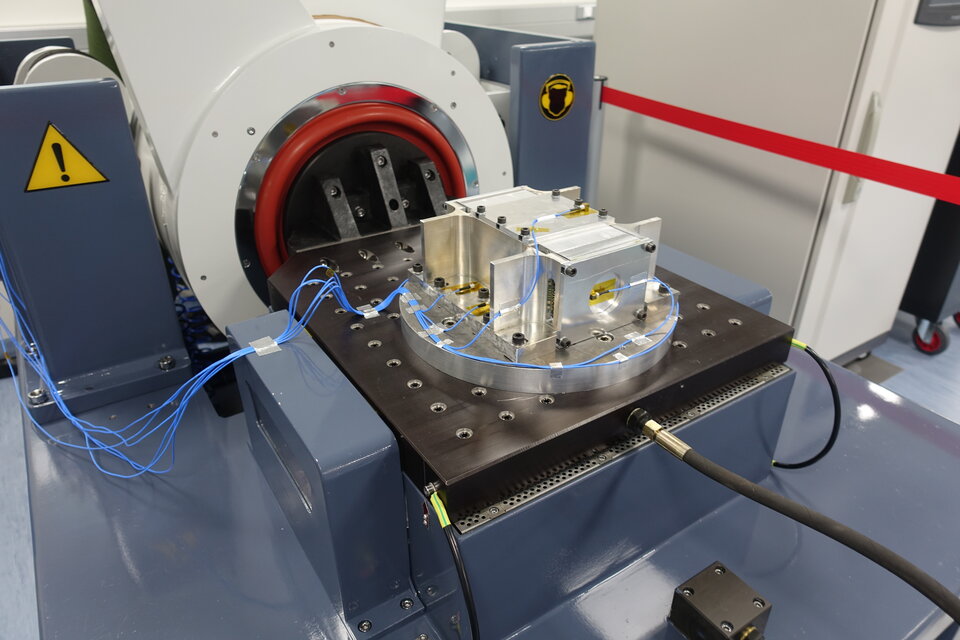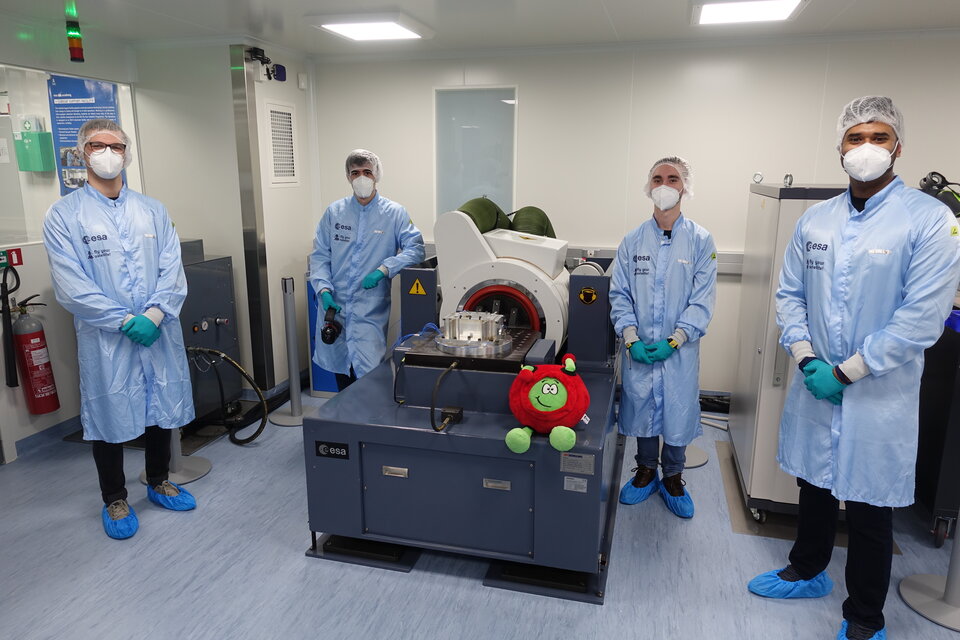Orbit Your Thesis! team “AIM” is one beat closer to the International Space Station
In brief
This week, the Artery in Microgravity (AIM) team of ISAE-SUPAERO and Politecnico di Torino has succeeded in passing the most grueling mechanical test that any space hardware has to succumb to prior to flight, the vibration test campaign. It took place at ESA Academy’s very own test facilities in ESEC-Galaxia in Belgium.
In-depth
Indeed, the mechanical loads and stresses imparted on hardware and experiments as they are launched into space by means of large rockets has the potential to destroy or incapacitate the experiment even before getting to space. It is therefore crucial to engineer and build the experiment in such a way that the vibrations do not affect the performance in orbit.

Since 2019, the AIM team has gone through many iterations of an experiment that is designed to look at blood flow through special 3D printed silicone arteries that are modeled from a diseased (stenotic) artery. Because of this restriction in the blood vessel, the flow of blood is affected, and turbulent flow ensues. The presence of gravity also affects the flow in blood vessels and the team therefore were interested in modeling this turbulent flow in microgravity. In addition, the team will also investigate the flow through an artery that has been mechanically ‘restructured’ with the presence of a stent, a small netting surgically placed that reshapes the artery to a less constricted configuration.
With such delicate and sensitive equipment crammed into such a small format factor, the design was particularly challenging for the team. Whilst every effort was made to assess the impact of vibrations using computer modeling, nothing can assure the students and the launch authorities better than the actual physical test. It is this uncertainty between the results of the modeling and the results of the actual test which render vibration campaigns quite exciting and suspenseful.

Thankfully for the team, all the vibration tests were passed and behaved as expected, meaning the structure is safe for launch. In addition to this however, and just as important, the hardware also functioned impeccably after the vibrations, meaning that the scientific output of the experiment is also unaffected by the launch vehicle vibrations.
Next week, the final tests to assess the mechanical, power and communication interfaces with the ICECubes Facility (ICF) operated by Space Applications Services will be conducted in Belgium. Indeed, the objective for the AIM team is to operate their hardware on board the ICF for up to 4 months on the International Space Station. If these tests are also successful, the students will make the necessary arrangements with ESA to launch in May 2022.

